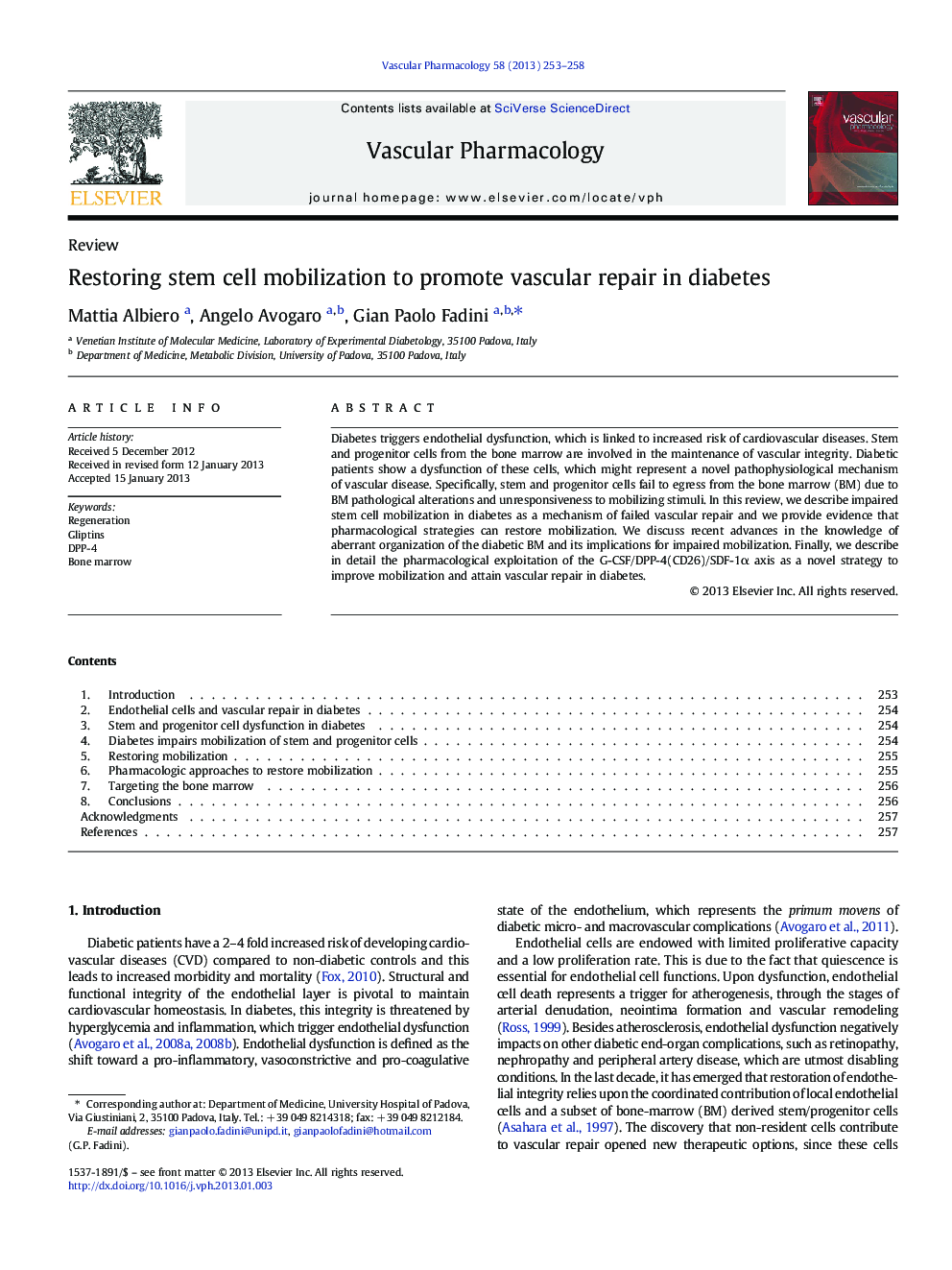| Article ID | Journal | Published Year | Pages | File Type |
|---|---|---|---|---|
| 2574278 | Vascular Pharmacology | 2013 | 6 Pages |
Diabetes triggers endothelial dysfunction, which is linked to increased risk of cardiovascular diseases. Stem and progenitor cells from the bone marrow are involved in the maintenance of vascular integrity. Diabetic patients show a dysfunction of these cells, which might represent a novel pathophysiological mechanism of vascular disease. Specifically, stem and progenitor cells fail to egress from the bone marrow (BM) due to BM pathological alterations and unresponsiveness to mobilizing stimuli. In this review, we describe impaired stem cell mobilization in diabetes as a mechanism of failed vascular repair and we provide evidence that pharmacological strategies can restore mobilization. We discuss recent advances in the knowledge of aberrant organization of the diabetic BM and its implications for impaired mobilization. Finally, we describe in detail the pharmacological exploitation of the G-CSF/DPP-4(CD26)/SDF-1α axis as a novel strategy to improve mobilization and attain vascular repair in diabetes.
Graphical abstractFigure optionsDownload full-size imageDownload high-quality image (128 K)Download as PowerPoint slide
